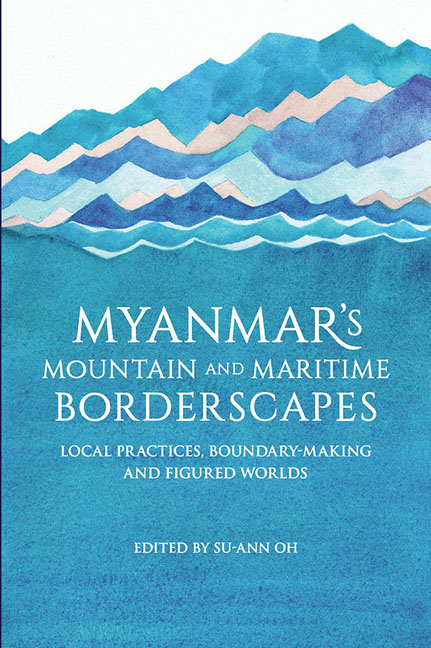Book contents
- Frontmatter
- Contents
- List of Tables
- List of Figures
- Acknowledgements
- Notes on Language, Terminology and Geographical Names
- Contributors
- Abbreviations
- 1 Introduction
- I Overview of Myanmar's Mountain and Maritime Borderscapes
- 2 Electoral Sovereignty in Myanmar's Borderlands
- 3 The Maritime Frontier of Myanmar: Challenges in the Early 21st Century
- II Territorial Claims and Imagined Boundaries
- III Social Organization and Border Economies
- IV Mobile Practices and Moving Borders
- V Identity Construction and the Politics of Belonging
- VI Institutionalized Identity and Border Practices
- Index
2 - Electoral Sovereignty in Myanmar's Borderlands
from I - Overview of Myanmar's Mountain and Maritime Borderscapes
Published online by Cambridge University Press: 06 June 2017
- Frontmatter
- Contents
- List of Tables
- List of Figures
- Acknowledgements
- Notes on Language, Terminology and Geographical Names
- Contributors
- Abbreviations
- 1 Introduction
- I Overview of Myanmar's Mountain and Maritime Borderscapes
- 2 Electoral Sovereignty in Myanmar's Borderlands
- 3 The Maritime Frontier of Myanmar: Challenges in the Early 21st Century
- II Territorial Claims and Imagined Boundaries
- III Social Organization and Border Economies
- IV Mobile Practices and Moving Borders
- V Identity Construction and the Politics of Belonging
- VI Institutionalized Identity and Border Practices
- Index
Summary
INTRODUCING THE BORDERLANDS
Myanmar's ongoing political reorganization offers opportunities to understand national geography and sovereignty in new ways. This chapter is the first scholarly effort to comparatively examine the political, cultural and economic characteristics of Myanmar's borderland constituencies. Under the 2008 Constitution, 330 elected constituencies are represented in Naypyitaw's Lower House (Pyithu Hluttaw) with fifty-two of those constituencies sharing a land border with Myanmar's neighbours: Bangladesh, India, China, Laos and Thailand. These constituencies in Chin State (6 constituencies), Kachin State (9 constituencies), Kayah State (3 constituencies), Kayin State (4 constituencies), Mon State (1 constituency), Rakhine State (2 constituencies), Sagaing Region (6 constituencies), Shan State (16 constituencies) and Tanintharyi Region (5 constituencies) are the focus of this chapter (see Figure 2.1 and Table 2.1). While previous Myanmar governments have been described as “isolationist” or “insular”, the administration that was headed by President Thein Sein has actively embraced the regional community and sought new international connections. As Myanmar relished its first opportunity to chair the Association of Southeast Asian Nations (ASEAN) in 2014, this analysis helps illuminate a range of important political and geopolitical forces in borderland areas. From such a perspective, the borderland constituencies are ideal sites for seeking answers to questions about the relationships and disjunctures that define Myanmar's diverse political terrain.
From the swamps of the south to the Himalayan peaks of the far north, the borderlands are Myanmar's most diverse and broken country: mountainous, often forested, and with sparse populations scattered across countless small villages and some hundreds of more sizeable towns. What the borderland constituencies all have in common is an international border, which brings them into close contact, both now and in the past, with neighbouring peoples (Farrelly 2012a, pp. 130–33). In a manner of speaking the borderlands are a “laboratory of continuity” (Boutry 2011, p. 21) that has “shaped the Burmese societies’ adaptations to political, social, economical and cultural changes”. In many cases, connections across the international frontier are intense, deeply personal and relatively immune to the vicissitudes of national polity formation. Around Myanmar's borders the frontier meanders for 6,000 kilometres, although the precise length is a matter of some dispute.
- Type
- Chapter
- Information
- Myanmar's Mountain and Maritime BorderscapesLocal Practices, Boundary-Making and Figured Worlds, pp. 39 - 69Publisher: ISEAS–Yusof Ishak InstitutePrint publication year: 2016

